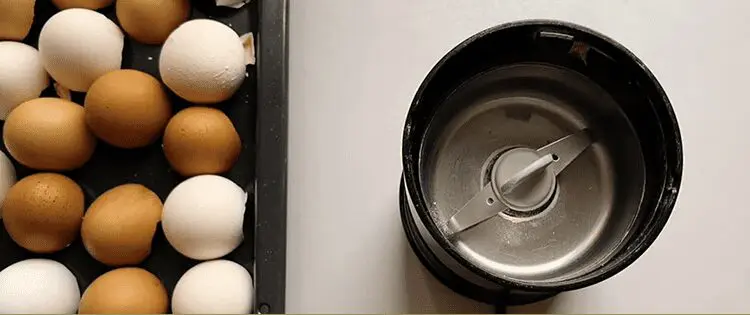There are a thousand and one old remedies for plants that look sick, are droopy, or simply aren’t doing their very best. Why is that? Because until pretty recently, that was how you fixed your plants. You couldn’t just go to a store and grab a miracle elixir that re-balanced the soil for your garden.
Perhaps because of that, we have so many different tricks and tips for different areas of the country. After all, the soil in Georgia is going to be vastly different from than the soil in Maine. The thing is, some of these problems carry over no matter what. And one of those is a lack of calcium for plants.
Tossing your eggshells in vinegar and using them as a spray is a great way to impart calcium. Here, we’ll find out exactly how to do that and why you should. Let’s get a’crackin’!
Calcium Uptake for Plants
There are a ton of plant varieties that, for one reason or another, just aren’t very good at sucking their nutrients up. This means that no matter how carefully you’re applying your general fertilizer, they’re probably not going to use those nutrients in the best way that they can. That’s where tricks like this come into play.
The acid in the vinegar allows the plant an “easy access” route to suck up all the broken-down calcium that it can get to. It’s quick, easy, effective, and cheap (always a good thing), and the plants absolutely love it.
What Kind of Vinegar?
I strongly recommend against apple cider vinegar specifically for this one trick. The stickiness that apple cider vinegar tends to leave will also attract insects and other nasty little critters that may damage the plant while looking for something they consider “sweet”.
No, plain white vinegar evaporates without the tacky residue and is the best option for this plant treatment. If you cannot find white vinegar, try to find some salad vinegar. It’s usually primarily white vinegar and will work just as well, even if it has a little extra something added to it (such as a bit of basil) to complement a salad dressing.
You can also try livestock feed stores or home improvement stores in your search for vinegar, as well. So long as the vinegar is “feed grade” (it will say so somewhere on the label; where depends on the brand), it is safe to use on your precious plants.
Is There Anything Bad That Can Happen?
Don’t spray the leaves of your plants. Spray the mixture around the base of the plant and you should be fine. Any excess calcium simply won’t be absorbed or will be allowed to filter through the ground and away from the plant (perhaps onto neighboring plants, so take a glance below to make sure your planting partners aren’t going to be affected).
Bluntly, unless you are literally pouring a gallon of this mixture on a tiny seedling plant, you probably won’t hurt anything that’s common in most home gardens.
Sensitive Plants
Herbs can be a bit picky in the calcium-heavy ground, so you may want to avoid spraying down even weak-appearing herbs with this mixture unless you are absolutely certain that they’re lacking calcium.
Gourds, too, seem to dislike this mixture unless they’re barely hanging on by a threat. Again, you aren’t going to hurt them (gourds, in fact, are some of the easiest plants to grow) but they may not grow as happily or willingly if you’re dousing them with this mixture.
I also avoid using it on my sensitive fruits, too. I’ve noticed a faint tang with some berries and soft stone fruits if I use too much vinegar-based anything (including this mixture) over the weeks/months of ripening. You can give it a try on a control plant (ie: just use it on one plant and see if the others taste any different) and check to see if you have the same results I’ve had in the past. If not, go for it. Most of the berries I’ve seen absolutely love the acid from the vinegar and suck it right up. If you do taste something off, go a little lighter with the vinegar or water the spray down even more before using it.
How-To
This one is pretty easy. You’ll need a gallon jug, a funnel, a coffee bean grinder (the cheap ones are great), vinegar, 10+ eggshells, and a day (give or take).
Toss your eggshells on a baking sheet and bake at 350F for around 2 hours.
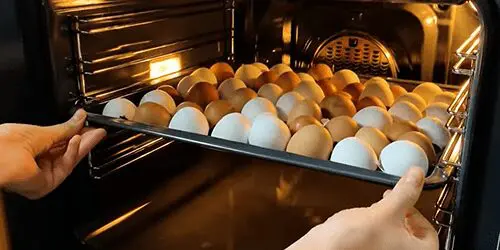
Put your eggshells in the coffee bean grinder and reduce them to a fine, almost ash-like consistency.
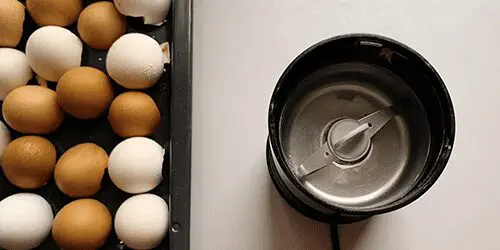
The finer it is, the less chance you have of ending up with clogged drain holes on your watering device.
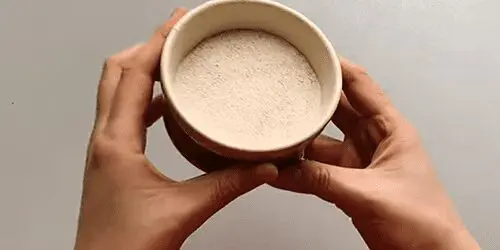
Add 2 tablespoons of ground eggshells to 2 tablespoons of white vinegar in a small bowl. It should froth pretty fast. Be aware that this smells a little strange but that you’ll get used to it quickly.
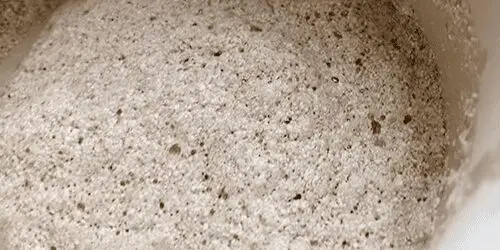
Mix this until fully incorporated, then go ahead and add it to your gallon jug (or gallon-sized watering canister) using a funnel. Fill the rest of the container with water and, if possible, put a lid on it and give it a good shake-up.
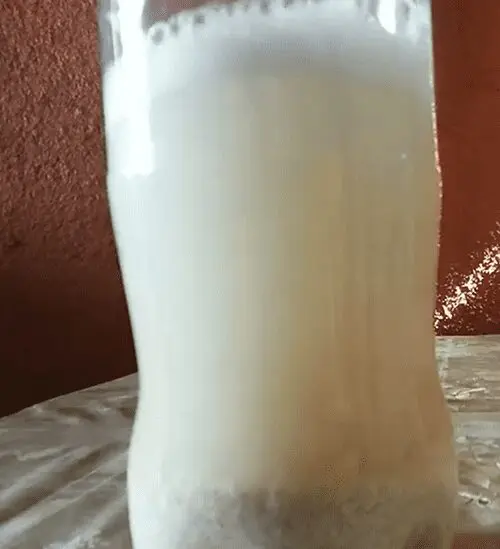
The mixture is ready to go and will impart a ton of calcium to your plants, easily available for them to use, and fantastic for your soil when dealing with the vast majority of plants. Just remember to take your time while watering with this so you don’t splash yourself and smell like ketchup all day long.
Final Thought
Generally speaking, you should not need to use this that often. Eggshells can be stored for months in an air-tight container in the fridge and vinegar rarely goes bad.
Have you used this method before? Are you a fan of it or do you prefer more recent developments in gardening or perhaps a specific formula from your local gardening store? We’re eggscited to find out! Let us know below in the comments and, as always, Happy Gardening!
You may also like:
What Happens If You Spread Coffee Grounds In Your Garden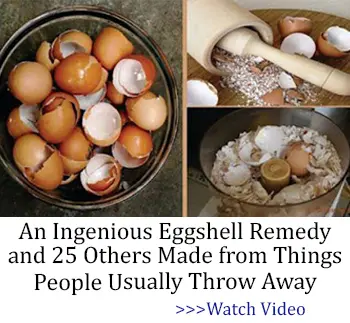
Stop Spending Money At The Pharmacy By Growing These 10 Plants (Video)
Strange Gardening Tips And Tricks That Really Work
If You See These Bugs In Your Garden, Get Rid Of Them Immediately!
How To Get Rid Of Tomato Hornworms Before They Destroy Your Tomato Plants

